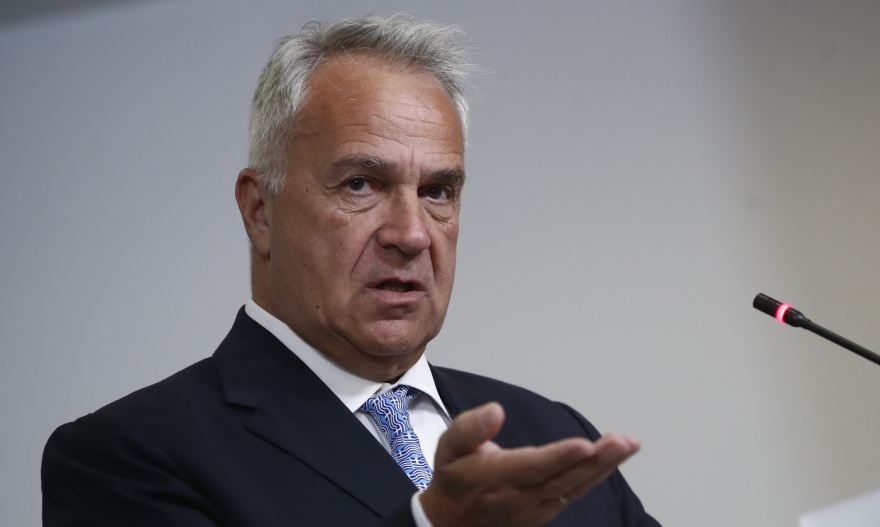Shift to stricter policy and practices to deal with illegal immigration does the European Union. In the shadow of rising far -right forces, the European policy once expressed by German Chancellor Angela Merkel and her famous selfie with Syrian refugee and current German citizen Anas Montamaniit is now moving to stricter rules, which, among other things, provide for the strengthening of controls, intensifying returns to countries of origin, but also targeted to provide a residence permit in European countries, based on their needs of workforce with specific skills.
Yesterday, Great Wednesday, The Commission has released the list of countries of origin which are considered “safe”, thereby limiting asylum potential to their nationals who migrate to the European Union.
This list includes Kosovo, Bangladesh, Colombia, Egypt, India, Morocco and Tunisia.
The German agreement
In Europe the stricter policy in Migratorywhich in Greece was marked by the assumption of the ministerial portfolio by the Mr. Maki Voridis It may be symbolically reflected in Mrs Merkel’s yesterday’s statement, which, in addition to politics, welcomed the agreement of the two future government partners in Germany, the Christian Union and the SPD.

The new Migration and Asylum Pact in the EU Provides four basic pillars, which are:
■ Strict control: Those who do not qualify for the EU entry They will be recorded and subject to identification, safety and health checks.
■ EURODAC database for asylum and immigration: Eurodac regulates the existing database into a fully developed asylum and immigration database, ensuring the clear identification of all those entering the EU. as asylum seekers or as irregular migrants.
■ Procedure at borders and refunds: A mandatory process will be applied to the border for asylum seekers who are unlikely to need protection, mislead the authorities or are at risk of security. In addition, effective reintegration supports will be made for those who are not eligible for international protection.
■ Crisis management protocols and action against tooling: The Crisis Regulation provides rapid action protocols that are accompanied by operational assistance and funding in emergency cases.
Returns of illegal immigrants to countries of origin are a key rule of the new pact, but data show that fewer than one in five who are required to return to their countries do so. In particular, according to Eurostat, although in 2023 484.160 Illegal immigrants were ordered to leave the EU, finally just 91.465 (18.9%) returned to their countries of origin.
Greece, as Mr Voridis has emphasized, strongly supports the policy of returns and in this context is also included in the decision of the Ministers of Foreign Affairs and Migrationpublished last week and passed to the Government Gazette, with which Turkey is part of the list of safe third countries.
In particular, the JMC It explicitly provides the designation of Turkey as a safe third country for applicants for international protection with a country of origin Syriathe Afghanistan, the Pakistanthe Bangladesh and Somalia.
According to the Ministry of Immigration, the decision will allow for immediate rejection of asylum applications and the return of those immigrants from these countries have illegally entered Greece from Turkey.
On the basis of European sources, the fact that Turkey is not working with the European Union is a major problem for which there is no way to deal with.
However, what the EU is seeking. It is the conclusion of agreements with third countries for an organized immigration program based on the specific needs of Member States in the workforce, after certifying the professional qualifications and skills of permanent migration candidates in Europe. “Why not attract Europe, for example, specialists in the field of India technology?” A day ago, a member of the Commission, referring to the new EU immigration policy, was wondering. and its goals, while noting that they could be covered by legal paths and gaps in the field of health and agricultural production. However, the same executive could not convincingly respond to the observation how illegal migratory routes would close from countries such as Afghanistan (for people who are not asylum) or Pakistan.
Deportations?
After all, in Greeceat the culmination of the refugee crisis and the years that followed until 2019-2020, the largest percentage of immigrants in the reception-detention centers came from Afghanistan.
Another parameter that comes into the equation for legal immigration is the security and control of those who will be given a license for legal and permanent immigration in Europe. However, in the context of the new policy, expulsion is a one-way street for those who are considered dangerous to the security of EU member states. In the same context, the EU It moves in the direction of common procedures for expulsion of illegal immigrants who are not entitled to protection status, while Commission At the same time, it proposes that the judicial decisions of refunds be recognized in all countries of the Union, so that no new procedure with the same object is needed in another Member State, if in the meantime the person against whom an deportation has been issued has been moved to another European country than the one who issued the decision.
Photo: Shutterstock
